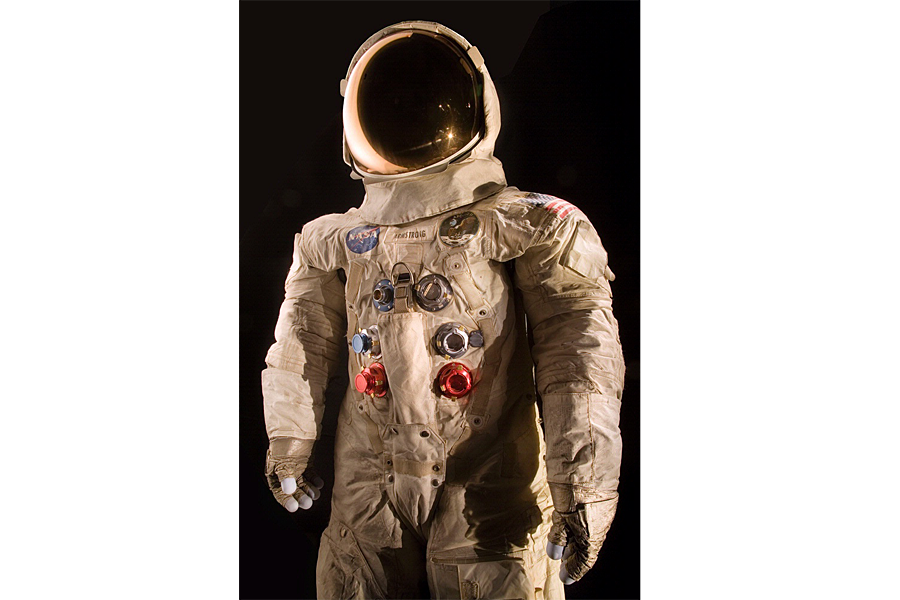Reboot the suit: With $500,000 pledged, Smithsonian sets sights even higher
Loading...
Even NASA may not have expected this kind of blast off.
A crowdfunding effort to preserve the spacesuit Neil Armstrong wore on the Moon has overshot its target, and now the organizers are setting their sights even higher.
The National Air and Space Museum partnered with Kickstarter to raise $500,000 to conserve the suit. It met that goal within five days and now hopes to raise $700,000 and conserve Alan Shepherd’s Mercury spacesuit, the suit he wore while making America’s first manned space flight in 1961.
As of midday Monday, the “Reboot the Suit” campaign had raised more that $550,000.
Mr. Armstrong’s spacesuit will be displayed temporarily in 2019 – for the 50th anniversary of the Moon landing – and in a new exhibit at the museum, called “Destination Moon,” planned for 2020.
The Smithsonian Institute has partnered with Kickstarter for a series of crowdfunding projects. Armstrong’s spacesuit is the first.
Per Kickstarter rules, if the project misses its target all the donors get their money back. If the target is met donors get “thank you” prizes. Smaller contributions can net donors a Neil Armstrong Spacesuit mission patch or a 3D print code of his glove. Larger donations could yield even more. Donate $2,500 or more, for example, and you could get a Smithsonian flag that flew into space on the Space Shuttle Discovery.
Kickstarter spokesperson David Gallagher told The Christian Science Monitor earlier this month that Kickstarter is successful in large part because it “creates a community” of backers and project developers.
“It’s not just about raising money, but about gathering a community around an idea,” Mr. Gallagher says. “A lot of people come to us and say ‘I was raising funds for something but I came away with this group of people who are my supporters and my fans who want to stay on top of what I do next.’ There’s a sense of ownership there. You get involved and feel like you had a part in making this thing happen.”






